

Hearing is one of the most essential senses that connects us to the world around us. Any issue with the ear can affect communication, balance, and overall quality of life. Dr. Meenesh Juvekar, a leading ear specialist in Mumbai, provides expert diagnosis and treatment for a wide range of ear disorders using advanced technology and patient-centered care.
Ear infections, blockage, wax in the ear, discharge, and hearing loss are among the most common ear-related problems. At our clinic, we have the most advanced facilities for diagnosing and treating all types of ear conditions with precision and care. You can explore our detailed list of ear problems to understand your condition better and learn about the available treatment options.
As an experienced Ear doctor in Mumbai, Dr. Juvekar provides expert solutions for:
Dr. Meenesh Juvekar is recognized as one of the best ear specialists in Mumbai, known for his expertise in otology and hearing restoration. He has helped countless patients overcome chronic ear conditions and regain their hearing through advanced surgical and non-surgical treatments.
His clinic is equipped with state-of-the-art diagnostic and surgical facilities, enabling precise evaluation and treatment of complex ear issues, including those requiring cochlear implant surgery or delicate middle ear reconstruction.
Every ear problem is unique. Dr. Juvekar takes a personalized approach — carefully assessing each patient’s symptoms, medical history, and needs before recommending the most suitable treatment plan. From medical therapy to advanced ear surgeries, his focus remains on achieving lasting recovery and comfort.
Patients across Mumbai and Maharashtra trust Dr. Meenesh Juvekar for his compassion, surgical excellence, and dedication to improving hearing health.
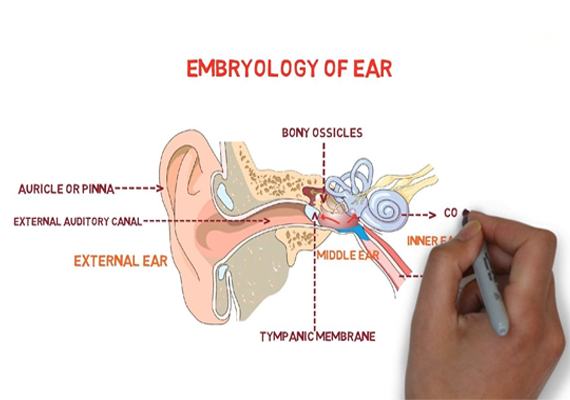
Embryology is the study of the origin and development of single individual embryo in prenatal period.
Details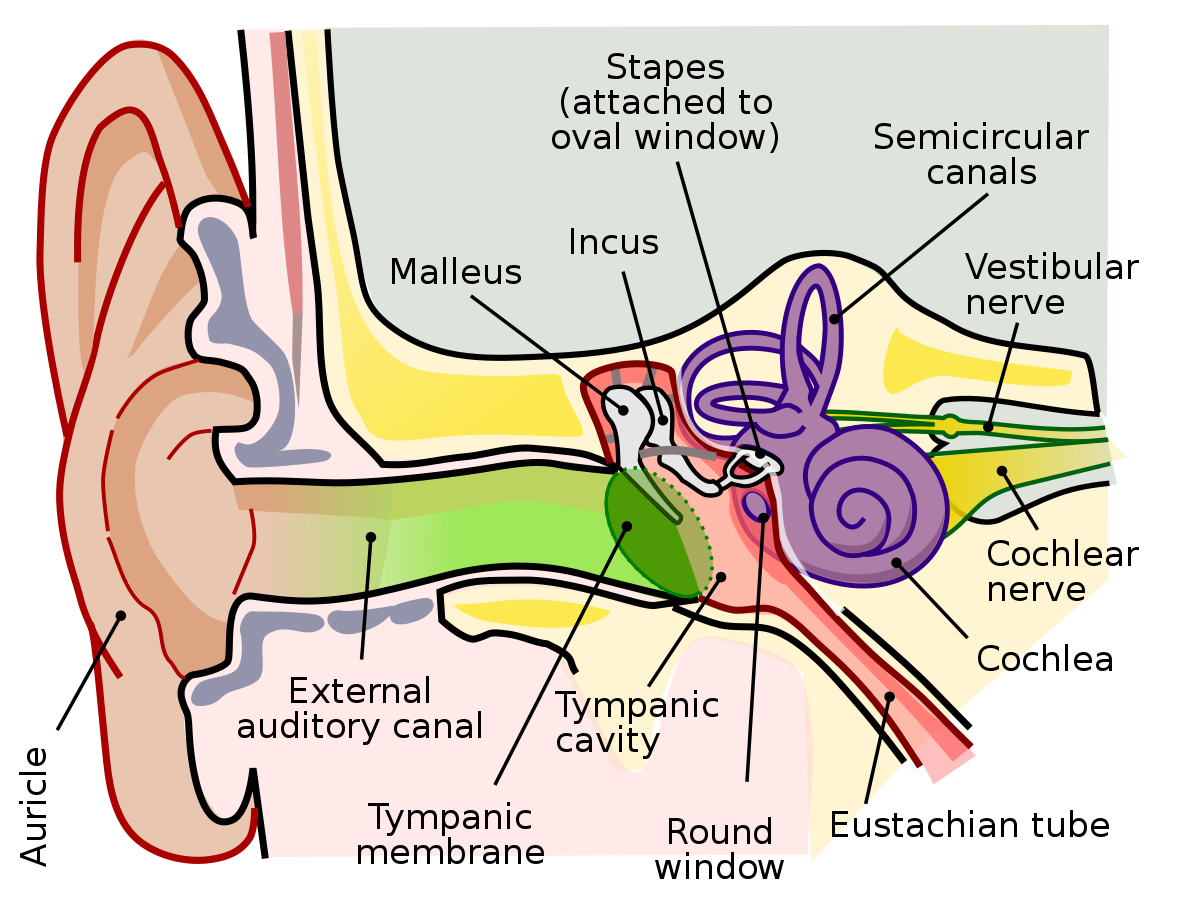
The middle ear cleft is a space which consists of the middle ear cavity or tympanic cavity, the Eustachian tube, the mastoid air cell system and the mucosal lining the system
Details
wax in the ear is a very common issue. Wax is secreted by the ceruminous glands and sebaceous glands presenting the cartilaginous part of the external auditory canal. Ceruminous glands are also called modified sweat glands.
Details
Syringing is an OPD procedure used for removal of wax, foreign bodies, debris from the ear.
Details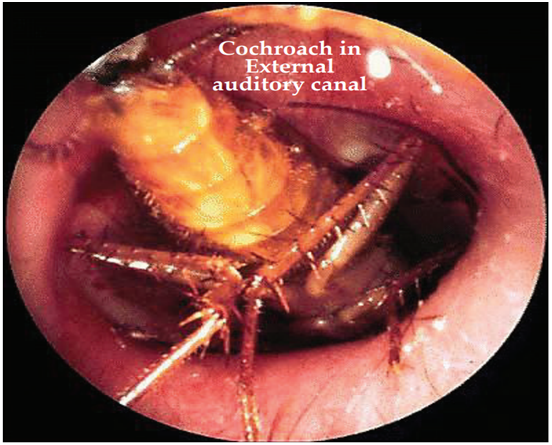
Foreign bodies in the ear are commonly seen in children below 10 years of age.
Details
This test is done to compare the auditory acuity of each ear to bone and air conduction.
Details
This type of hearing loss can occur due to any condition which interferes with the conduction of sound reaching the cochlea.
Details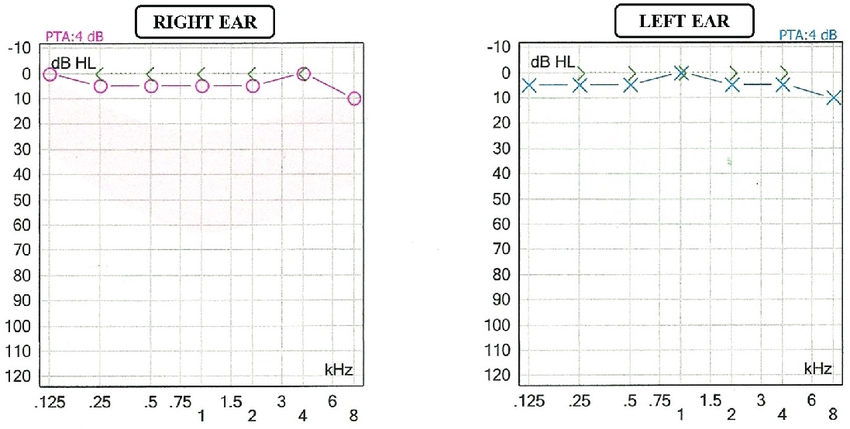
Definition: This test gives a qualitative and quantitative analysis of patients hearing. The frequency range tested in 125 Hz to 8000 Hz.
Details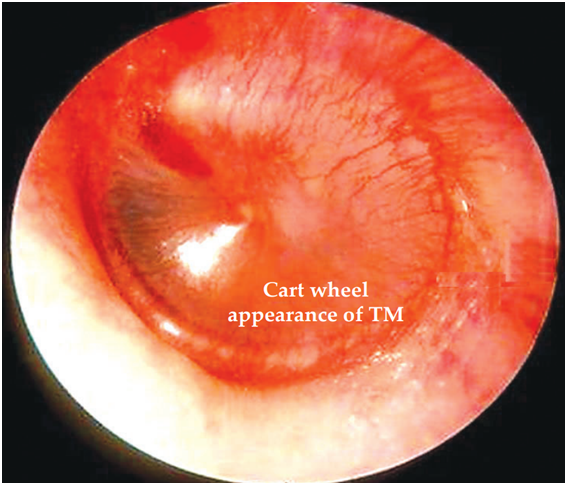
It is an Acute infection affecting the mucosal lining of the middle ear cleft and the mastoid air-cell system. It often follows an upper respiratory tract infection
Details
This condition is characterized by the presence of non-purulent fluid in the middle ear cleft.
Details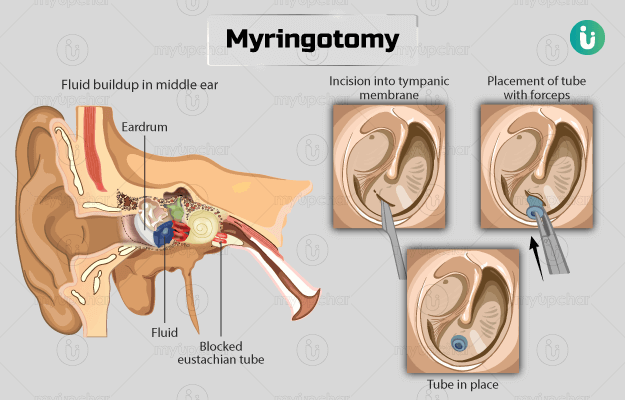
It is an incision made on the tympanic membrane to drain out suppurative or non-suppurative middle ear effusion.
Details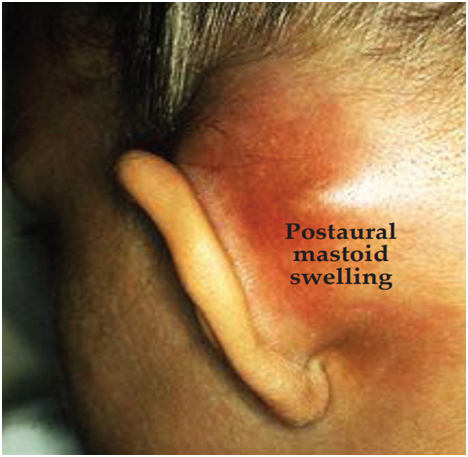
Acute mastoiditis is a complication of acute suppurative otitis media, where the infection spreads from the mucosal lining of the antrum to involve the bony walls of the mastoid air system
Details
It is a complication of acute mastoiditis when the disease passes inferiorly through the medial aspect of the mastoid tip into the sheath of sternomastoid muscle.
Details
Cholesteatoma is the presence of squamous epithelial pocket or sac, filled with keratin debris within the middle ear cleft. It is a cause of Active Squamous epithelial type of Chronic otitis media.
Details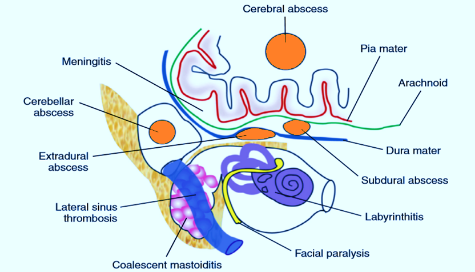
Complications are usually seen in Active Squamosal type of COM with Cholesteatoma.
Details
Acute mastoiditis is a complication of acute suppurative otitis media, where the infection spreads from the mucosal lining of the antrum to involve the bony walls of the mastoid air system.
Details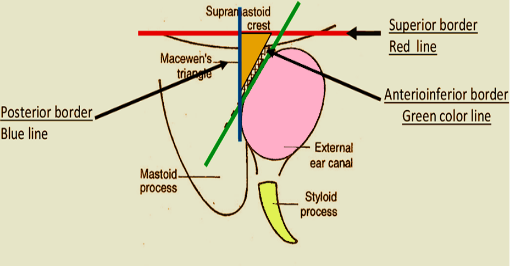
This triangle is the most important surgical landmark for the mastoid antrum or the largest mastoid air cell
Details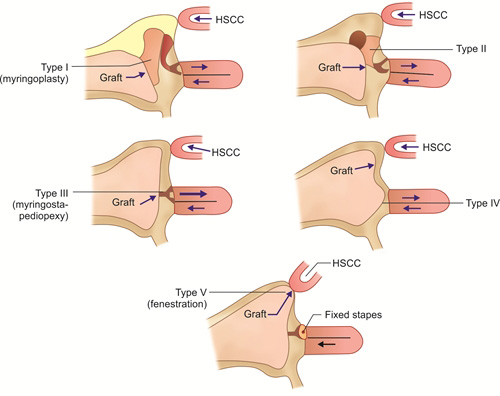
Tympanoplasty is a surgery to eradicate disease in the middle ear cleft and to re-construct the hearing mechanism with or without mastoid surgery with or without tympanic membrane grafting.
Details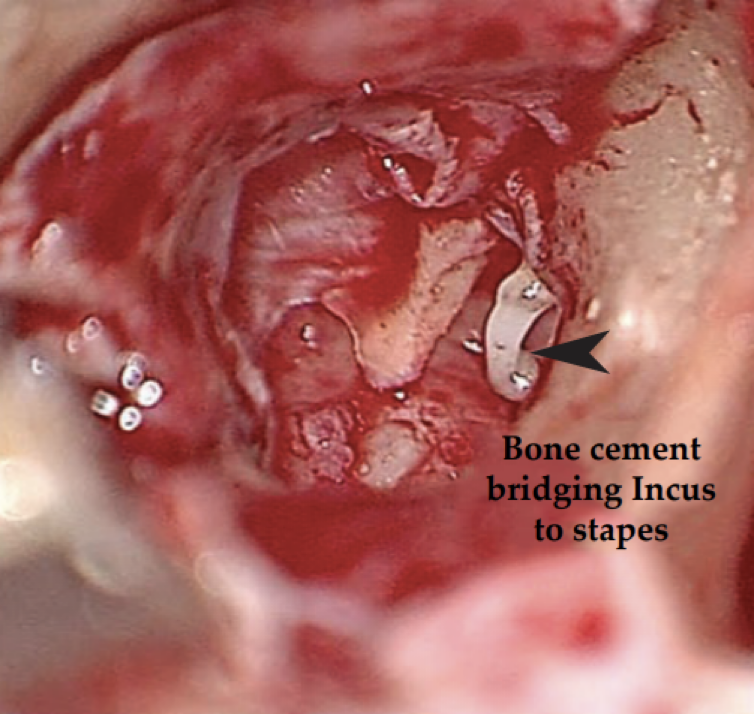
Ossiculoplasty is the reconstruction of the middle ear ossicular chain which has been disrupted or destroyed, by the use of interpositioned implants which help in regaining the original mechanics of the ossicular chain to transfer the sound energy to the inner ear.
Details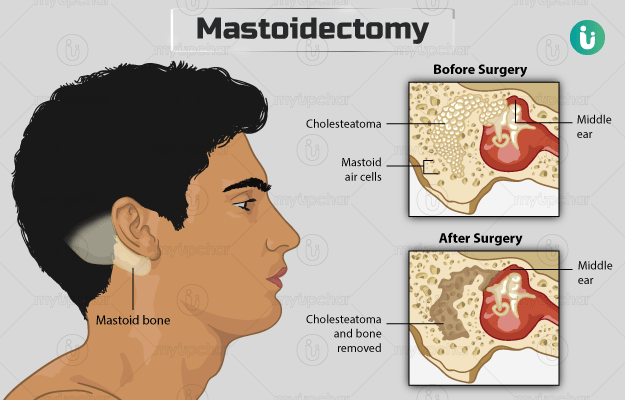
Mastoidectomy is a surgery performed to eradicate the disease present in the middle ear cleft, the mastoid air cells and the attic. The extent and type of disease indicates the type of mastoidectomy required.
Details
Bell’s palsy is the most common type of peripheral, unilateral, infranuclear and idiopathic paralysis of the facial nerve. Details
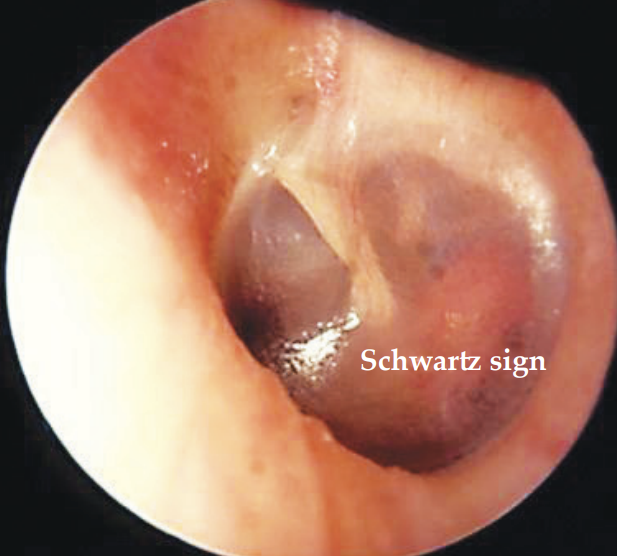
Otosclerosis is a hereditary localized disease originating from the otic capsule in which mature lamellar bone is removed by osteoclasts and replaced by woven bone of greater thickness, cellularity and vascularity.
Details
In 1861 Prosper Meniere described a condition characterized by sudden spontaneous episodes of vertigo, nausea, vomiting and fluctuating hearing loss. This is called Meniere’s Disease or endolymphatic hydrops.
Details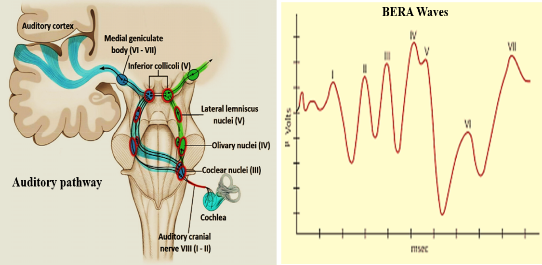
Brainstem Evoked Response Audiometry (BERA) is an objective electrophysiological test measuring response in the brain waves that are stimulated by a clicking sound to check the central auditory pathways (hearing) of the brainstem.
Details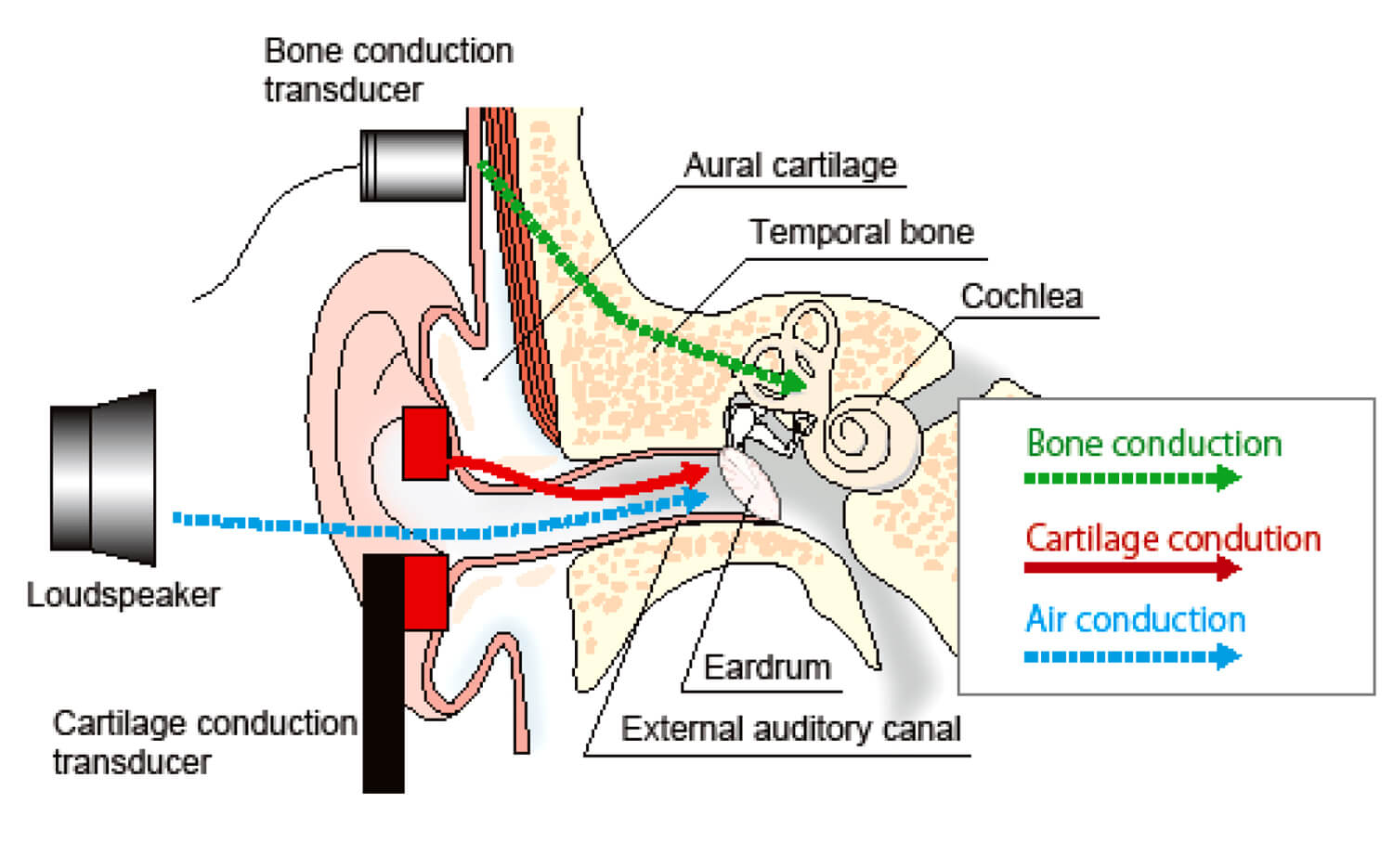
A hearing aid is a device which amplifies the sound and thus improves the hearing.
Details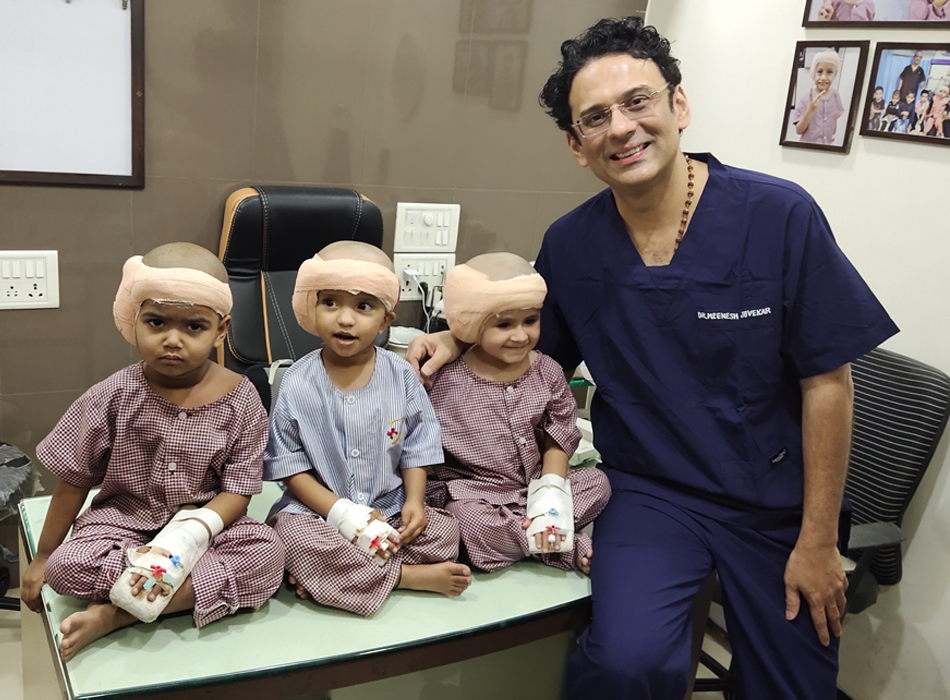
Cochlear implant surgery is a surgically placed electrical devices that receive sound and transmit the resulting electrical signals to electrodes implanted in the cochlea of the ear.
Details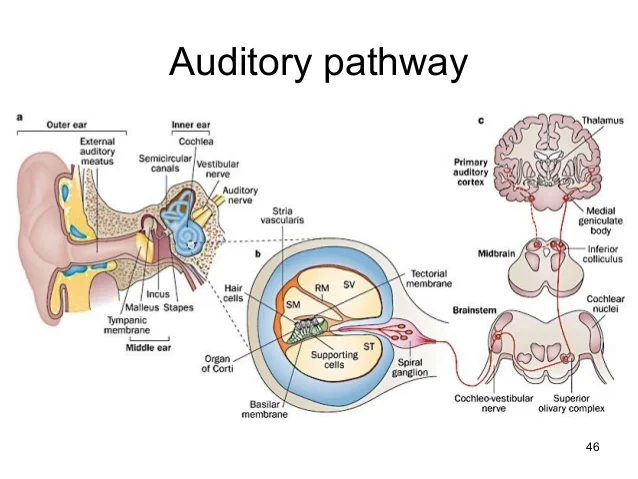
Tinnitus is defined as a sound perceived more than five minutes at a time in the absence of any external acoustic or electrical stimulus to the ear and not occurring immediately after exposure to loud noise, phantom auditory perception, or head noise.
Details
Vertigo refers to a specific symptom describing a false sense of motion, usually spinning or rotatory, in the surroundings or within oneself despite the absence of physical movement. In clinical practice, the term ‘vertigo’ is not usually volunteered by patients.
DetailsDr. Juvekar treats a wide range of ear conditions such as ear infections, ear blockage, wax buildup, ear discharge, tinnitus (ringing in ears), and hearing loss. He also specializes in complex cases requiring ear surgery and cochlear implants.
You should consult an ENT or ear doctor if you experience persistent ear pain, hearing difficulty, ear discharge, dizziness, or a sensation of fullness in the ear. Early diagnosis helps prevent complications and permanent hearing damage.
Yes. Juvekar Nursing Home in Mumbai is fully equipped with advanced diagnostic and treatment facilities for all types of ear infections, ear blockage, wax removal, discharge management, and hearing loss treatment.
Yes, ear infections, wax accumulation, and temporary hearing loss are common among both children and adults. However, with timely consultation and care from an experienced ear specialist, these conditions can be effectively treated.
Our clinic offers state-of-the-art audiometry, endoscopic ear examinations, ear microsuction for wax removal, and advanced hearing restoration procedures, including cochlear implants for severe hearing loss.
If you are experiencing ear pain, discharge, blockage, or hearing loss, don’t delay professional care. Consult Dr. Meenesh Juvekar, the best ear specialist in Mumbai, Maharashtra, for an accurate diagnosis and effective treatment plan.